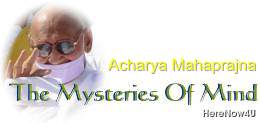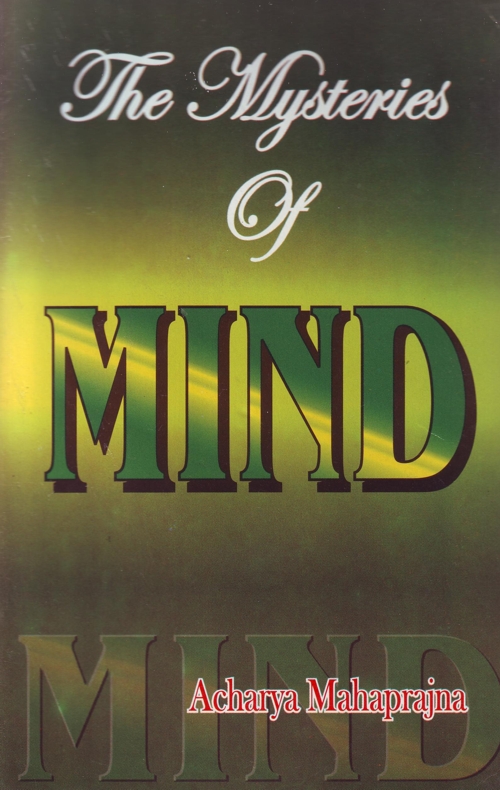
- See, the universe is vibrating.
- One who knows the secret of indulgence in sense-pleasure also knows the secret of how to dissociate himself from them.
- One who knows the secret of dissociation also knows the secret of indulgence in sense-pleasures.
- Every object goes on changing.
- There are two kinds of vibrations: natural vibrations - vibrations of consciousness in the soul and vibrations caused by external agencies - vibrations of karma particles or of the subtle body - vibrations of taijasa or vital energy.
- Vibrations in consciousness are the subtlest - vibrations caused by karma particles are subtler - vibrations of vital energy are subtle - vibrations of the gross body are gross.
- Vibrations, which cause delusion, are the most numerous.
- Vibrations of breath are produced by energy: electricity produced by friction - the currents of electricity in the brain.
- The life of the living being depends on the vibrations of vital energy.
- Sensations opposed to vasana (accumulated desires).
- Combination of positive and negative energy.
- Combination of prana and apana airs.
- Combination of the positive energy of the tongue and the negative energy of the palate.
- Vibrations, which produce spiritual experience.
- Devotional recitation of mantras (charms) and the upward movement of energy - supreme non-attachment or vairagya - Vibrations caused by fixing motionless eyes (preksa) on the end point of the nose - the arousing of taijasa or kundalini.
- Majja or grey matter - level of the unconscious mind - bindu (point) connected with the subtle body.
- The entry of vital energy in the Susumna channel produces joy and calm in the mind - the beginning of spiritual vibrations - self-absorption.
- What are joys and sorrows? Joys and sorrows are the products of the mind or consciousness yoked to the vibrations.
- Vibrations of delusion:
- Emotional excitement, fear, grief, hatred, accumulated desires and despondency.
- These are cast away by opposing vibrations.
Spiritual Joy
Substance is constant as well as variable. If it were only constant, there will be no need for action. It undergoes transformations because of its very nature. New entities are born and the old ones destroyed in the process of its vibrations. The soul also is constant as well as variable like other substances. It produces two kinds of vibrations: natural vibrations and artificial vibrations brought about by external agencies. The natural vibrations of the soul take place ceaselessly. Artificial vibrations are produced by external agencies, which are of various kinds. Kama (action) is one of them. Prana (vital energy) is another. Human beings are subject to three kinds of vibrations: vibrations of the soul, vibrations of karma and vibrations of vital energy. The whole universe is a sea of vibrations. One part of it is no doubt constant, but even it is subject to continuous transformations. Another part of it is eternal, but that also undergoes modifications. Everywhere there is a flux of change and vibrations. It is a Herculean task to search out something, which does not vibrate.
The vibrations of consciousness are the subtlest. Those of karma or the subtle body are subtler. Those of prana (vital air) are subtle. Those of the gross body are gross. When we feel the vibrations of the gross body, we take them to be joys and sorrows. It is not possible to go beyond them and to search for joy. So far as we live on the level of empirical consciousness we cannot imagine anything beyond it capable of giving joy.
Breath also vibrates. Its vibrations produce electricity. Vital energy is the controlling force of life. It is called ayusya prana. It also vibrates and causes further vibrations in all the pranas, in the sense-organs, in the mind, in speech and in the body. There are ten pranas. Every one of them vibrates in its own way. The entire composition of life depends on their support.
There are eight karmas (actions) and each of them vibrates in its own way. The vibrations of moha (delusion) are the thickest and most numerous. Emotions, excitements, fear, sorrow, grief, hatred, unwholesome change, sex-desire, etc. are vibrations of de lusion. They happen ceaselessly and do not stop of themselves. It is due to them that we sometimes feel joy and at other times sorrows. Some of them produce joy while others produce sorrow.
What are joys and sorrows? Let us understand them clearly. We experience joys and sorrows when the mind becomes connected with the vibrations. If the mind did not do so, there will be neither joys nor sorrows. When the mind becomes yoked to pleasing vibrations, we experience pleasure. When the mind becomes yoked to unpleasant vibrations, we feel sorrows. If we did not connect the mind with the vibrations, there will be neither joy nor sorrow.
 Acharya Mahaprajna
Acharya Mahaprajna

